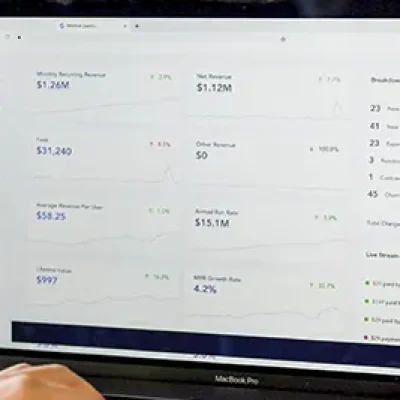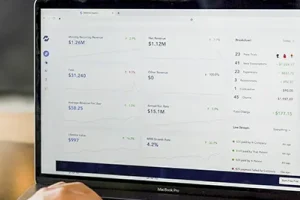October 20, 2023
What is Public Relations Measurement according to our vision?
In brief, it is a robust set of Key Performance Indicators (KPIs) that enable communication professionals to measure and demonstrate the exceptional value that public relations strategies bring to the business. Furthermore, it assists us in optimizing current strategies and planning for the future with precision.
Benefits of robust data-driven Public Relations Measurement:
Outperform your competitors: When you have a perfect understanding of the KPIs required to outclass your competitors, you increase your chances of success. Use this information to shape your strategies, guide storytelling and media interactions, and continually adjust your campaigns.
Demonstrating the value of public relations: Senior management seeks tangible results and business metrics. Data is the key to showing the impact of our actions on the business. The more we use data to demonstrate this value, the easier it is to convince leadership to invest in public relations.
Increasing your budget and resources: Showing the value of public relations is directly tied to resource expansion. If you want to grow your team or increase the influence of your key initiatives, prove that your work contributes to business growth.
Becoming a strategic advisor: To participate in company decision-making, adopting a data-driven approach is essential. Data and measurement will help you be more strategic and proactive, providing you with unique insights and recommendations that can influence the direction of your brand.
Optimizing your campaigns: Measuring the effectiveness of your campaigns, allows you to identify what works and what doesn’t. This helps you adjust your tactics in real-time and achieve better results. Furthermore, evaluating past campaigns is crucial for developing future strategies and securing the right budget and resources.
Fostering innovation and business agility: Without measurement, there is no room for experimentation and innovation. Since each organization’s ability to keep up with market dynamics is now more critical than ever, real-time tracking and measurement are needed to enable communication professionals to adapt quickly in any condition.
Supporting the long-term vision: Strategic public relations are a marathon, not a sprint. Continuous measurement plays a crucial role in your long-term strategy. A solid measurement framework that tracks your KPIs over time provides an overview of the success of your long-term initiatives, such as increasing brand awareness or improving reputation year after year.
Do vanity metrics still hold value in Traditional Public Relations?
Vanity metrics in traditional public relations, such as Advertising Value Equivalent (AVE) or simple media coverage numbers, have lost relevance in today’s communication landscape. These metrics often fail to provide a comprehensive understanding of the impact and effectiveness of PR efforts. However, some traditional PR metrics can still be valuable when used with more meaningful metrics. Here are some examples:
- Media mentions: Tone and context of media coverage to help evaluate the overall perception of your brand or campaign. While the quantity of media mentions alone may not be sufficient, tracking the quality and sentiment of those mentions can be valuable.
- Reach: Quantifies the potential audience exposed to your PR messages, it can provide a broad understanding of your campaign’s visibility. However, it’s important to complement reach with metrics reflecting engagement and conversions to assess the effectiveness of your PR efforts.
- Share of Voice: Measures the proportion of media coverage or industry conversations your brand receives compared to the competition. While this metric doesn’t directly indicate the impact of PR efforts, it can help evaluate your brand’s visibility and competitive position within the industry.
- Brand awareness: Provides insights into how your PR efforts contribute to improving brand recognition and recall among your target audience. Tracking brand awareness metrics, such as aided or unaided recall.
It’s important to note that these vanity metrics in traditional PR should be used in combination with actionable metrics that reflect engagement, conversions, and overall impact on business objectives. By incorporating both traditional and actionable metrics, you can gain a more comprehensive understanding of the effectiveness of your PR efforts in the current communication landscape.
Digital Public Relations
Digital PR is essential in any brand’s marketing strategy. Managing reputation and visibility in the digital world, quickly, intelligently, and measurably, has become indispensable. Promoting the brand’s value proposition at touchpoints where consumers read, listen, and watch, in the formats they prefer is imperative. Adopting a Digital PR strategy strengthens the brand’s online presence and expands business opportunities.
Digital PR plays a crucial role in building a strong brand and a positive reputation in the digital world. However, to assess the impact of PR strategies in this environment, it’s essential to use actionable metrics. These metrics not only measure performance but also provide valuable information for making effective decisions. By employing actionable metrics, you can evaluate and optimize your strategies, achieve tangible results, and guide the brand’s sustainable growth in the digital environment.
Did you know?
- 54% of social media users use these platforms to search for information about products and services. (GWI).
- 64% of consumers trust online recommendations from friends and family, and 49% trust influencer opinions. (Edelman).
- 70% of online shoppers seek reviews and feedback before making a purchase decision. (HubSpot).
- 91% of consumers read online reviews before making a purchase decision. (ReputationUP).
Here are some key steps to establish an effective approach to measuring Digital PR:
- Set clear objectives: Define specific goals you want to achieve with your Digital PR strategies. Do you want to increase brand visibility? Improve online reputation? Setting clear goals will allow you to select the appropriate metrics.
- Choose relevant metrics: Identify those that align with your objectives. For example, if your goal is to increase brand visibility, metrics like social media followers or message impressions will be important.
- Use monitoring and analysis tools: Various tools are available to help track and analyze your Digital PR activities. These tools enable you to measure metrics such as post reach, user engagement level, organic/referral traffic, and overall sentiment of mentions.
- Continuously track: Regularly monitoring metrics is essential to evaluate progress and make adjustments if necessary. Stay alert to trends and changes in your audience’s behavior to adapt your Digital PR strategies accordingly.
- Evaluate impact: Conversion metrics are essential for understanding the real impact of your Digital PR strategies on business outcomes. These metrics will help you determine if you’re generating sales, capturing leads, or achieving established goals.
And, what are the actionable KPIs for measuring the performance of Digital PR strategies?
Actionable metrics play a crucial role in measuring and evaluating Digital PR strategies. By selecting and measuring the appropriate metrics, brands can gain valuable insights to make informed decisions and optimize their digital public relations efforts.
- Earned Media
- Awareness-driven publications: These generate extensive reach, increase brand visibility, and build trust by creating awareness among the target audience about products or services.
- Off-page SEO publications (with keywords and backlinks): These generate organic and referral traffic to the brand’s website and help increase SERP (search engine results page) rankings and PageRank.
- Interactions/engagement: These foster audience engagement, strengthen the brand-customer relationship, and play a key role in the sales funnel by attracting, educating, and converting prospects into leads.
- Reach: The number of people exposed to amplified brand content on social media, reaching a wider audience and increasing visibility to new potential customers.
- Referral Website Traffic: The number of visitors to the brand’s website, which can result in increased interaction, conversions, and sales—the ultimate goal of any internet marketing action.
- Social Share of Voice: This metric helps evaluate the effectiveness of your social media strategies and content by examining the volume and quality of interactions you generate compared to your competitors. It allows you to benchmark against other industry players, identify areas of strength or weakness, and track the success of your social media campaigns.
Don’t forget to engage in social listening every day: Monitor and analyze conversations on social media to identify potential communication crises, take preventive measures, and respond effectively to protect the brand’s online reputation and image. It provides valuable insights for adapting strategies, identifying trends, and efficiently responding to your audience’s needs.
In conclusion, the combination of traditional and digital metrics in a public relations campaign is essential for effectively evaluating the impact and reach of your strategies. While vanity metrics in traditional PR provide an overview, it is crucial to complement them with actionable metrics that reflect engagement, conversions, and impact on business objectives. In the digital world, actionable metrics are fundamental in making informed decisions and optimizing online public relations efforts. Setting clear goals, selecting the appropriate metrics, using analytics tools, and continuous tracking are key steps to success in digital public relations initiatives.
With an integrated communications strategy and the proper use of metrics, you will build a strong brand and maintain a positive reputation in the digital environment. Do not underestimate the power of actionable metrics in the digital era! Make sure to implement them and leverage their full potential to drive the success of your public relations campaigns.



